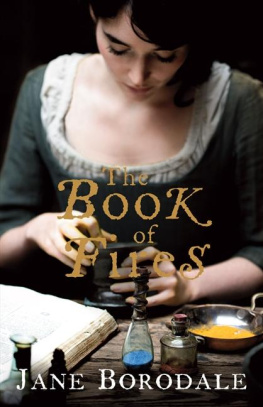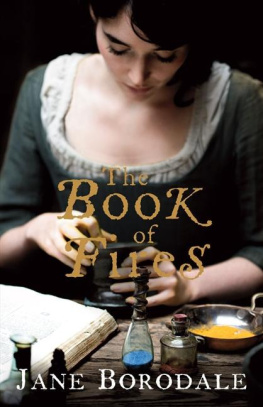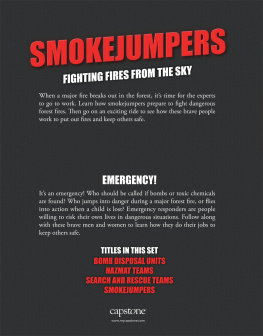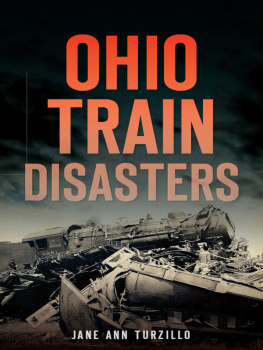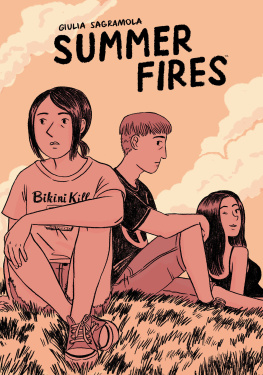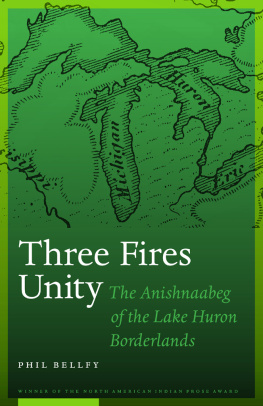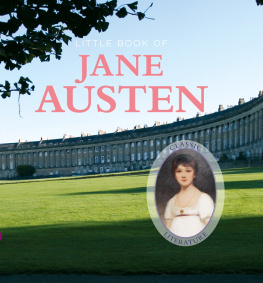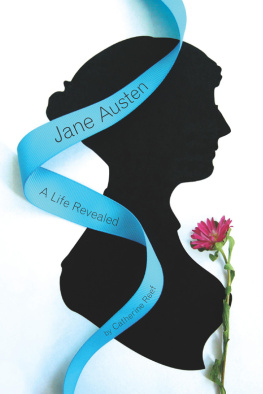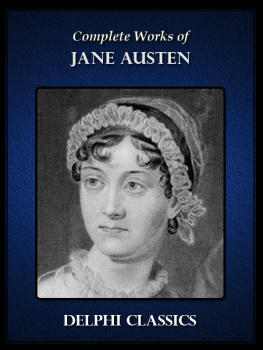ACKNOWLEDGMENTS
My first debt of gratitude is to my agent, the late Pat Kavanagh, for her support and enthusiasm, and who Im so sorry isnt here to see this to fruition. I was also very lucky to have had such rigorous, insightful and sensitive editing from Sarah Ballard, now also my agent; Clare Smith and Essie Cousins at Harper Press; and Pamela Dorman at Viking U.S. I would like to thank Sophie Goulden, Becky Morrison, Anne OBrien, Taressa Brennan and everyone at Harper Press; also Zo Pagnamenta, Carol MacArthur and Julie Miesionczek. I am grateful for funding from South West Arts, and indebted to the Royal Society of Literaturein particular to Maggie Fergusson, Julia Abel Smith and Piers Paul Readfor the time and space in which to write. Among the many books, places and people I was able to consult during research, certain resources were invaluable and I am particularly grateful to the staff at the British Library, and to the Weald and Downland Open Air Museum in Sussex. Special thanks to the expert pyrotechnician Maurice Evans for taking the time to talk to me about his work, and to the science historian Dr. Simon Werrett at the University of Washington for so kindly showing me chapters of his forthcoming history of fireworks. Other people I would like to thank for their help in a variety of ways are Chlo Hill, Jon Hill, Valerie Hill, Annie Hunt, Sam Hunt, Peter Beatty, Marie-Thrse Please, Paddy Greaves, Sidney Greaves, Lillian and Maurice Hill, Alice Oswald, Peter Oswald, Christopher Burns, Dr. Tom Hutchison, Robert and Maria Pulley, Helen Whittle at Storrington Museum, Danae Tankard, the late Vincent Woropay, Tom Widger, Catherine Beckwith-Moore and John Eric Drewes at American Fireworks News. Last and heartfelt thanks to my husband, Sean, for being my anchor light and litmus test. This is to him and the boys, for their love and patience.
SOME REFERENCES
This is a work of fiction, but many contemporary and later publications helped me toward a fuller understanding of fireworks and their chemistry and history, including The History of Fireworks, Alan St. Hill Brock, Harrap, London, 1949; Fireworks: A History and Celebration, George Plimpton, Doubleday, New York, 1984; The Chemistry of Fireworks, Michael S. Russell, Royal Society of Chemistry, Cambridge, 2000; The Incompleat Chymist, Jon Eklund, Smithsonian Institute, Washington, D.C., 1975; The Pyrotechnists Treasury: The Complete Art of Firework-Making, Thomas Kentish, American Fireworks News, Pennsylvania, 1993; Artificial Fireworks: Improved to the Modern Practice, Robert Jones, London, 1776; The Great Art of Artillery, Kazimierz Siemienowitz, trans. George Shelvocke, London, 1729; The Art of Making Fireworks , Frederick Bruhl, London, 1844; Pyrotechnia, or A Discourse of Artificiall Fireworks, John Babington, London, 1635.
Web resources included Old Bailey Proceedings Online, Ordinarys Accounts, and Manuscript Sessions Papers, at oldbaileyonline.org; and Carmen Giuntas Glossary of Archaic Chemical Terms at web.lemoyne.edu/~GIUNTA/archema.html.
Reading about eighteenth-century life included The Diary of Thomas Turner 1754-1765, ed. David Vaisey, Oxford University Press, 1984; London Life in the 18th Century, M. Dorothy George, Peregrine, London, 1985; Dr John-sons London, Liza Picard, Phoenix, London, 2001; Lichtenbergs Commentaries on Hogarths Engravings, trans. I. and G. Herdan, Cresset Press, London, 1966; The Family, Sex and Marriage in England 1500-1800, Lawrence Stone, Penguin, London, 1990; English Society in the 18th Century, Roy Porter, Penguin, London, 1991; English Dialect Words of the Eighteenth Century, ed. N. Bailey, London, 1883; Housekeeping in the 18th Century, Rosamund Bayne-Powell, John Murray, 1956; The Art of Cookery, Hannah Glasse, Prospect Books, Totnes, U.K., 1995.
Peter Lineburghs The London Hanged, Verso, London, 2006, was a particular inspiration, as was The Psychoanalysis of Fire by Gaston Bachelard, Beacon Press, Boston, 1968.
There is a regular rasp of a blade on a stone as he sharpens the knives. The blade makes a shuddery, tight noise that I feel in my teeth. Its November, and today is the day that we kill the pig.
I am inside the house, bending over the hearth. I lay pieces of dry elm and bark over the embers and they begin to kindle as the fire takes. A warm fungus smell rises up and the logs bubble juices and resin. The fed flames spit and crackle, colored jets hissing out wet. A column of thick smoke pours rapidly up the chimney and out into the sky like a gray liquid into milk. I hang the bellows from the strap and straighten up. Fire makes me feel good. Burning things into ash and nothingness makes my purpose seem clearer.
When I stand back, I see that the kitchen is full of smoke. My mother is busy and short of breath, flustering between the trestles and the fire-side, two blotches of color rising on her cheekbones. This fire must be a roasting blaze, one of the hottest of the year. It has to heat the biggest pots brimful with boiling water to scald the pigskin, and later will simmer the barley and puddings, fatty blood and grain packed into the washed guts, moving cleanly around in the cauldron of water. I go to the door and step out into the yard to fetch more wood. The weather is not gasping cold yet, but the chill is here. It is already not far till Martinmas, though the frosts have not set in like most years, and my breath is a white cloud ahead of me. A low sun has risen over the valley, pushing thin shadows into the lane. The damp air smells of rotting leaves and dung and the smoke from the chimney. I can hear rooks making coarse-throated noises over the beech trees on the hill. And my brother Ab is whetting the blades by the back door, scraping the metal over the stone away from him. As I cross the yard to the wood stack, I see the knife catching the shine of the orange sun as he works, a sharp flash of blinding light.
I whisper a list of things into the wood stack as I pull out logs and branches and pile them up against the front of my dress.
My name is Agnes.
I live in a cottage on the edge of the village of Washington, at the foot of the Downs where the greensand turns into clay. The lane that leads past the cottage is narrow and muddy, and floods with a milky whiteness when the rain pours down from the hill. Above us the scarp is thickly wooded, up to the open chalk tops where the sheep graze. My fathers family has been in Sussex for years. I am seventeen, we are quite often hungry, I work half of the day weaving cloth for the trade. And for the remainder, I do what girls do: stir the pots, feed the hens, slap the wind from the babies, make soap, make threepence go further...
His knife has paused. There is an unsteadiness on the air, something that does not add up to what I say. I stop myself talking and balance the armful of logs up on my shoulder to carry in.
The earth floor of the kitchen is a clutter of borrowed pots. We collected them from Mrs. Mellin days ago and are scalding them clean. My mother is counting out onions and shallots ready for chopping. She reaches up to the salt box over the mantel.
Mother! Hesters grizzling, I say to her loudly over the confusion of children, as though she were deaf, and she leaves the hearth and ducks into the back room, bending her long uncomfortable body over the truckle bed to pick up Hester. Her back is like a twist inside her clothes as she jigs the baby up and down on her hip to make her quiet. Her patience wears a little thinner with each child that comes.
We have debts in the village. My fathers work pays less since enclosure started, and he has been looking for any hiring that he can get. There is no more hedging work in the district. Last week he came home with six blue rock doves that we hid in a pile in the brewhouse until he could take them to Pulborough for the fair. My mother had been angry all day and when he came back after dark they fought for hours, using up rushlight. When we came down from the chamber in the morning I saw one of the jugs was cracked but put away tidily at the back of the shelf. This is the third full year we have not had a strip to grow a crop, and even the common land could be gone by the next, so this is the last pig.

